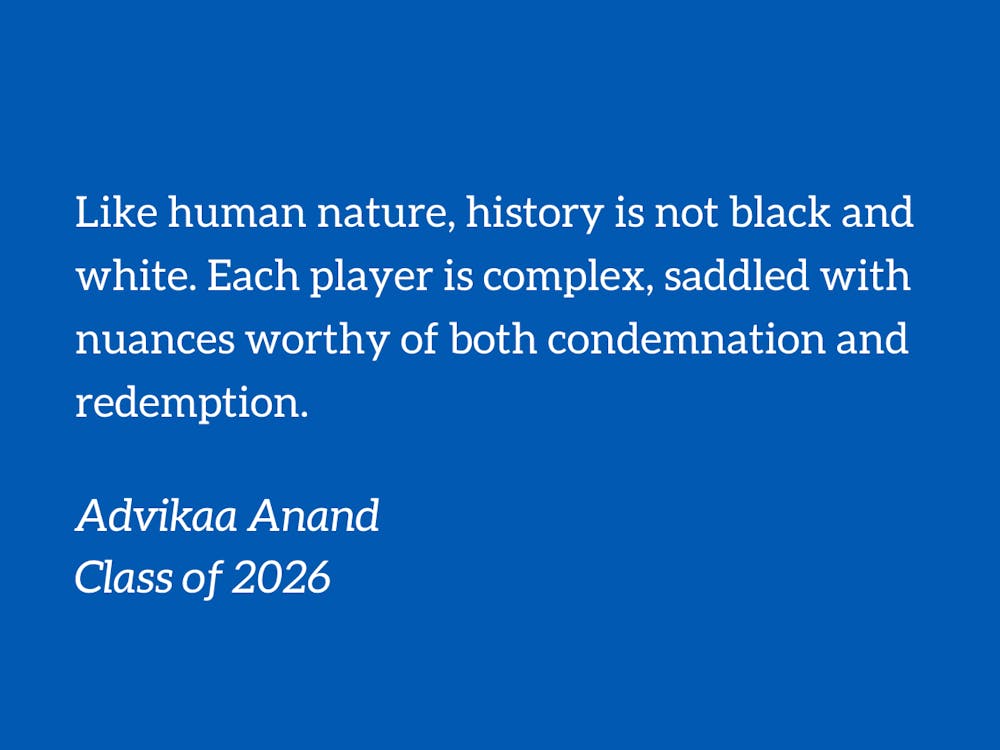I have dreamed of visiting London for a long time. My tenth-grade English literature class left me fascinated with the vivid pastoral descriptions nestled in poems by Sir Walter Raleigh and John Donne. Awash in these idyllic scenes, I yearned for the day that I too would get to relish the city’s treasures.
This past spring break, my dream came true. On our first day in the city, we cruised across the River Thames, in awe of the stupendous architecture surrounding us. It was beautiful, the way that history wedded the present at the river banks. The Gothic reflection of Westminster Abbey loomed large over the water.
Yet quickly, a pit developed in my stomach. As I drank in the beauty of this city, I could not help thinking of the complex colonial history concealed behind this magnificent architecture. As we marveled at Buckingham Palace, I could not help wondering how its construction and maintenance had been paid by the blood of millions of people like me: people of color who were exploited in the name of warped notions of glory.
Reckoning with the grandeur of Western civilization is a complex undertaking. On the one hand, it feels impossible not to admire its glories. On the other, my heart sinks at the thought of the human cost of this magnificence and the suffering that still endures as a result of these selfish pursuits.
Many people are uncomfortable with this logic, reasoning that colonialism is a thing of the past and thus its discussions are futile.
Yet, its ramifications bleed into the modern day. Countries in South Asia and Africa, primary sites of resource exploitation, must contend with poor treatment of income and wealth inequality, tenuous government organization, and ongoing intrastate conflict. Additionally, countries with robust histories of colonization must contend with unequal resource distribution, mass human rights violations and religious divisions.
Former colonies also face the unique victimization of indigenous populations, with these groups facing increased "systemic racism, cyclical poverty, economic inequity, violence, loss of language and culture, and an enormous number of missing and murdered indigenous women and girls."
I first felt this deep sense of discomfort when we visited the Tower of London. This historic site is often jokingly referred to as a holder of all stolen goods, but this attempt at humor rings hollow, precisely because it conceals the truth.
As I walked into the home of the Crown Jewels, I audibly gasped. The walls were studded with glass cases holding treasures from all over the world, such as the Cullinan Diamond, obtained during British exploits in South Africa and the largest diamond ever discovered, and the legendary Koh-i-Noor, one of the largest cuts diamonds whose passage around the world also reflects India’s diverse convoluted history of colonial rules.
Here, these jewels were displayed as emblems of British triumphs, relics of a bygone era in which their colonial power reigned across the world.
Yet, as the daughter of Indian immigrants, whose grandparents were forced to abandon their homes in modern-day Pakistan due to the divide-and-conquer political tactics pursued by the British, these jewels were also painful reminders of my family’s loss of our ancestral homes and forced displacement.
I walked out to behold the grand Tower Bridge, stretching across the two halves of London, and was pierced by a nagging question: How do we reconcile our admiration for a civilization’s great achievements with the harm it has imposed on other people?
Too often, we fall into the fallacy of justifying history because it paved the way for the present. During my visit, I heard plenty of explanations that excused British colonial exploits because of a "natural" survival-of-the-fittest, zero-sum game that naturally leads to the victory of the most deserving.
But just because winners of battles may author the pages of history does not mean that they also triumphed in the moral battle faced by every nation to choose justice over domination.
Since I arrived at Duke, I have been consistently encouraged by my professors and peers to question how our history is told. Our class discussions enabled me to analyze history from a variety of perspectives with a critical eye and to always ask whose story has not been told — a critical exercise in my intellectual development that I could not always execute in high school.
But while this lens of analysis might find resonance in the classroom, it is often lacking in the layman’s consumption of history.
As a result, it is crucial that preservers of this history are transparent about its origins. Every caption explaining an artifact’s source ought to clearly describe its complete history, including any ramifications faced by the losing side of the battle.
Open dialogue on the consequences of colonial exploits should be not only encouraged but also facilitated in these spaces. Visitors should be supported in any inquiries that question the morality of the historical actions of all sides of a war.
Like human nature, history is not black and white. Each player is complex, saddled with nuances worthy of both condemnation and redemption. We must recognize this fact, and willingly condemn actions that betray our sense of morality.
Transparency about the ethics of historical actions outside of its context paves a more equitable future ahead and ensures that our progeny do not suffer in the same way that our ancestors have. Because to learn from history, we must first understand it.
Advikaa Anand is a Trinity sophomore. Her column typically runs on alternating Thursdays.
Get The Chronicle straight to your inbox
Signup for our weekly newsletter. Cancel at any time.
Advikaa Anand is a Trinity sophomore and an opinion managing editor of The Chronicle's 119th volume.

